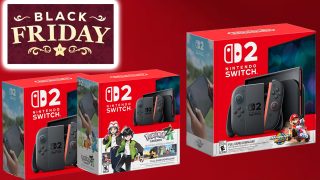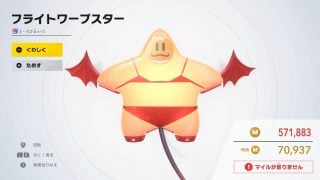Nintendo’s controller designs have repeatedly defined and redefined the standards of video game inputs for as long as it’s been making them. It’s true that these days we tend to associate Nintendo hardware with quirky, experimental ideas; but frequently, these offbeat concepts go on to become permanent fixtures of both Nintendo’s controllers and its competitors’. There was once a time when features like shoulder buttons or rumble seemed more like expendable luxuries than vital commodities, but nowadays it’s hard to imagine a controller without them.
On the other hand, it doesn’t always take evolutionary or revolutionary ideas to make a controller exceptional, sometimes we just like the way it feels. It could even be a nostalgic connection, rather than practicality, that draws us to particular designs.
We wanted to dig a little deeper into some of these brilliant and beloved designs, and share with you what it is that we love about our favorite Nintendo Controllers…

SNES
The basic shape and button layout of the NES controller laid the foundation for nearly all modern gaming controllers. It was just about the perfect design for the games that were being developed at the time, and has stood the test of time beautifully. Its successor needed to incorporate the same, simple fundamentals; but also accommodate an increasing level of complexity in game mechanics and input. Queue the SNES controller, one of the most elegant evolutions in the history of gamepad design.
Two action buttons just wouldn’t cut it in the 16-bit generation, so Nintendo took a few steps to ensure that designers would have all of input potential they would need. Sticking with the highly functional D-Pad and stacking a second row of buttons above the already familiar A and B made the design feel instantly familiar to our thumbs. Placing buttons underneath our pointer fingers, which were already resting on top of the controller, brilliantly and subtly broadened the design options even further.
Really considering ergonomics for the first time, the SNES controller did away with the harsh, rectangular shape of its predecessor. Rounding all of the controller’s edges and bookending the design with bulbous, grabbable handholds made it much more comfortable to use. This decision would become hugely important, considering all of the lengthy role-playing experiences that were on the way.
I won’t deny that nostalgia plays a strong role in my affection for the SNES controller design, but it was clearly a very important device in its own right for many, many reasons.

GameCube (by Jaxson Tapp)
It’s been well documented in multiple articles on Nintendo Wire that my love for the GameCube controller is great. In my mind, the boomerang-shaped controller that came bundled with the GameCube is the most comfortable controller out there, perfectly designed for its system and the games that reside on it. No other Nintendo controller to date has made such a lasting impression on me as the GameCube controller has. With its soft, matte finish, glossy face buttons, and satisfyingly clicky analogue shoulder buttons, along with a wide variety of available color schemes, it stands out among the crowd.
While it is true that the GameCube controller doesn’t lend itself well to every genre of game, the genres that it does cater to benefit immensely from the GameCube controller’s design. There will never be another controller that feels quite as at home when playing Super Smash Bros or Mario Kart. The X, Y, and B buttons are relegated to a peripheral position, and are perfectly placed for their function in most games, rather than sharing space with more commonly-used buttons, such as A. The one downside to the GameCube controller? Definitely the D-Pad, which became so ingrained in me that I still prefer a control stick over an old-fashioned directional pad, no matter which controller I’m using.
No other Nintendo controller has felt as comfortable in my hand or as satisfying to use, and I don’t think that will be soon changed. Am I biased by nostalgia? Probably, but only in part. Whether it’s due to nostalgia or not, the GameCube controller will go down in history as one of the great video game controllers.

Nintendo 64 (by Ricky Berg)
While my personal favorites are a bit higher up on this list I’ve probably spent just as significant an amount of time with the Nintendo 64’s controller. At a glance it would seem unwieldy: controllers leaned toward a two-sectioned design that comfortably housed both hands and delivered your fingers to the buttons. The N64 had a three-sectioned design and it would be a considerable feat to reach every input at once. The most significant addition would have to be the Z-Trigger, placed at the central section. Becoming a trigger, a crouch, or, most commonly, a targeting system, its opportunities defined the games of the system.
The loss of X and Y buttons might seem a bit strange these days, what with their return alongside the GameCube, but instead the right side of the pad was home to the C-buttons. These predecessors to a second analogue stick were never quite the best for camera control but having four, small, close buttons became a convenience for things such as the equipment management of Zelda and the availability of various moves in 3D platformers such as Banjo-Kazooie. It was also the first Nintendo console with an analog stick at all and while it feels a bit delicate compared to modern equivalents and it might have caused a few blisters via Mario Party it’s still a wave of nostalgia when it’s under my thumb.
The other major change brought about by the N64 was the rear-port for a multitude of peripherals. These Paks added new ways to interact and experience games while building on the ground work laid by its predecessors. The Game Boy transfer pack offered features akin to the Super Gameboy with the Pokémon Stadium games while also allowing your captured Pokémon to travel onto the big screen, an experience that blew my young mind away. Of course the most famous of these accessories would be the Rumble pack which introduced haptic feedback to games. It’s such a simple thing these days but when you could feel explosions in Star Fox 64 or know you’d just taken a powerful attack head on in Smash Bros. it was like nothing ever before.

Wii U Pro Controller (by Tom Brown)
When I try to think of my favorite controllers I try to imagine how they would work with the widest range of genres. While I have a nostalgic fondness for the three-pronged Nintendo 64 pad and the ever-comfortable GameCube controller, I have to admit that they aren’t very versatile. While they worked great for the games built for them, they stumbled with third party titles. As the PlayStation introduced dual analog the Nintendo 64 found itself with cumbersome camera controls, and very few first person games work well with the GameCube’s small nub of a C-Stick (hence Metroid Prime’s strafing nature).
It wasn’t until the Classic Controller that Nintendo finally tried to embrace a wider array of games, and even then it was a pretty rough start, thanks to its tiny ZR and ZL buttons and baffling cord placement. With the Wii U Pro Controller, however, they finally hit it out of the park without needing any revisions. It combines the face button placement of the SNES with the superb analog sticks of the GamePad, and its shoulder buttons just feel right. Even though they’re unfortunately not analog triggers, almost every genre can work flawlessly with Nintendo’s latest controller. Here’s hoping Nintendo keeps up the trend as it moves forward.

Wii Remote (by Jaxson Tapp)
The Wii Remote, dubbed the Wiimote by some, has to be the most influential controller of the last decade. What was thought to be a strange gimmick started a craze of motion controllers that eventually led the way to reliable VR controls in recent years. I can definitely attest to the efficacy of this so-called gimmick. There’s only one acceptable way to play Pikmin, and it is with a Wii Remote and nunchuck. To this day I’ve never spent more than five minutes playing Pikmin 3 any other way.
While there are definitely games that are better off using other controllers, thanks to the Wii’s weird button placements, there are plenty of other games that benefit from this control scheme — a favorite of mine being Tanks on Wii Play — but, in reality, the entire ecosystem of Nintendo games benefited from the Wii Remote. Players were able to interact with their games in a way that no other controller previously allowed.
Whether you were training in the use of a Crossbow with Link, bowling with your Mii, or frantically shaking the controller to best your friends in Mario Party, the Wii Remote was at the center of it all. You’d be hard pressed to find a house that doesn’t have a Wii Remote laying around somewhere these days; plenty of houses may even have four or more. Before the 3DS was even conceived, the Wii Remote added another dimension to gaming, and the entire gaming world benefited from it.
Leave a Comment

